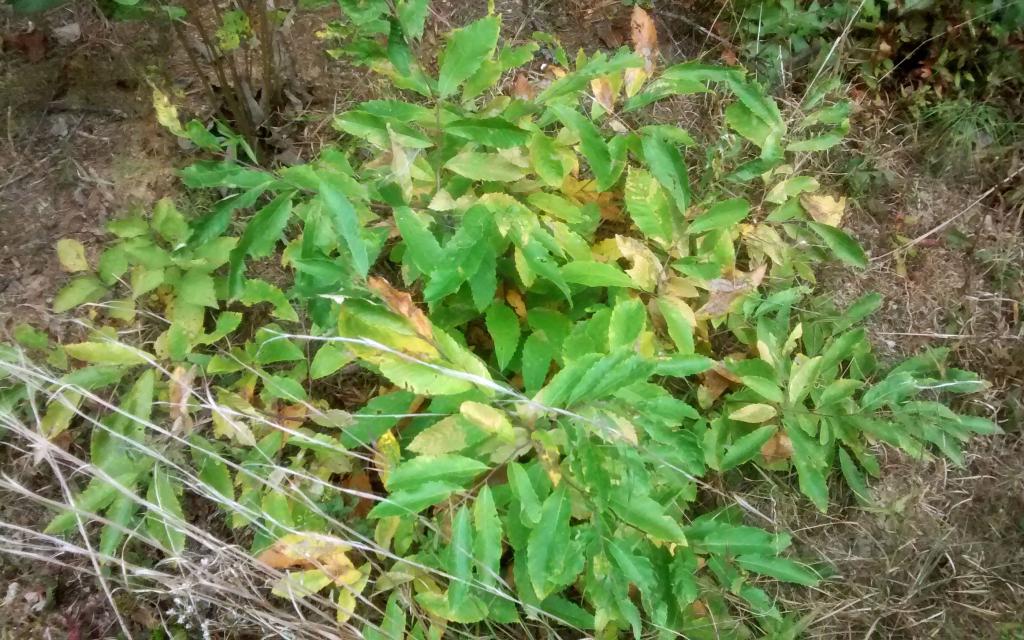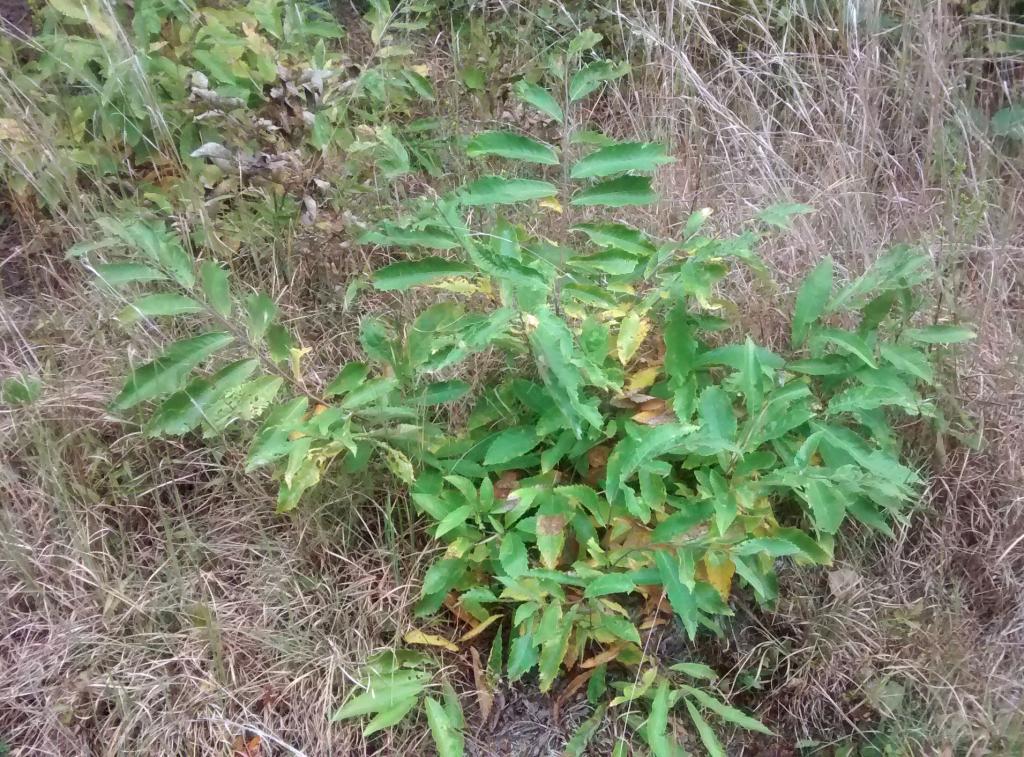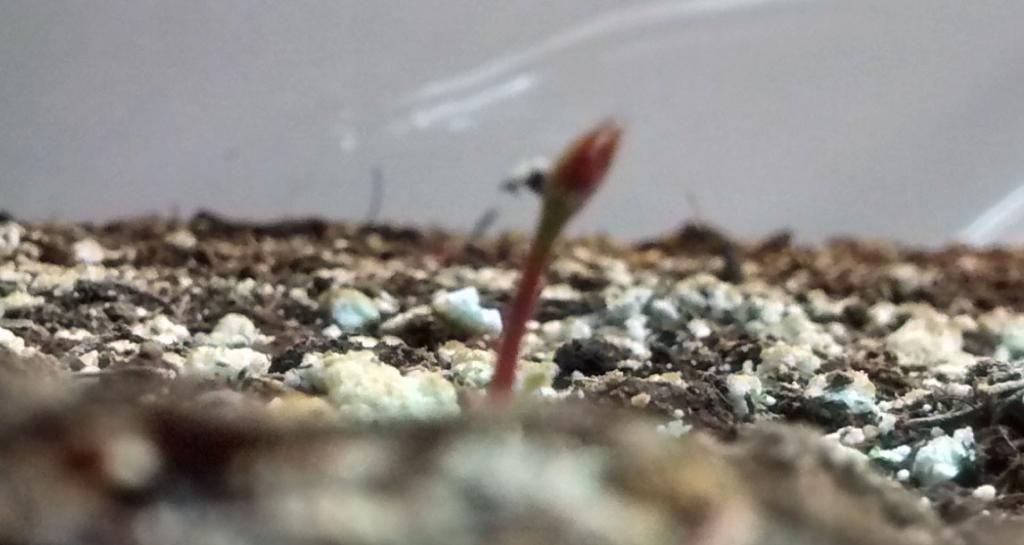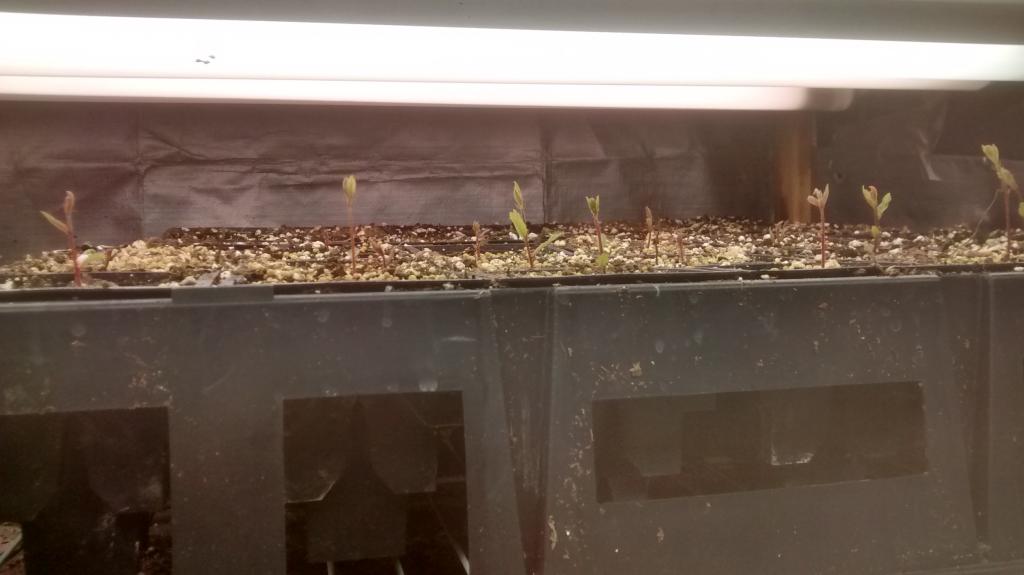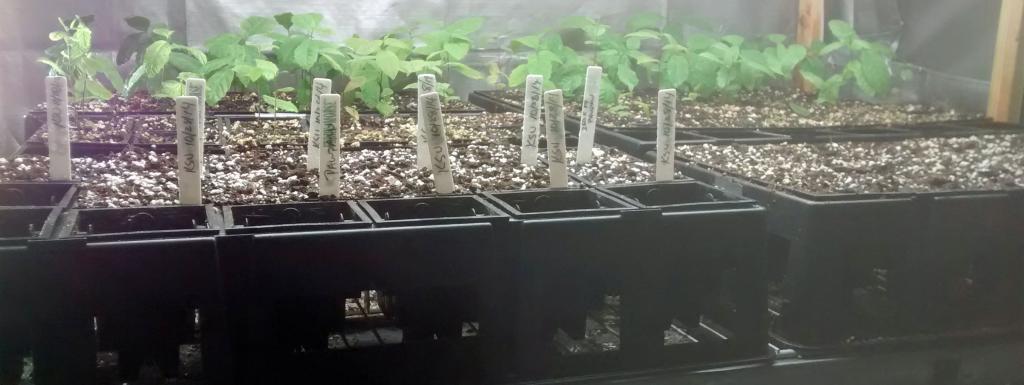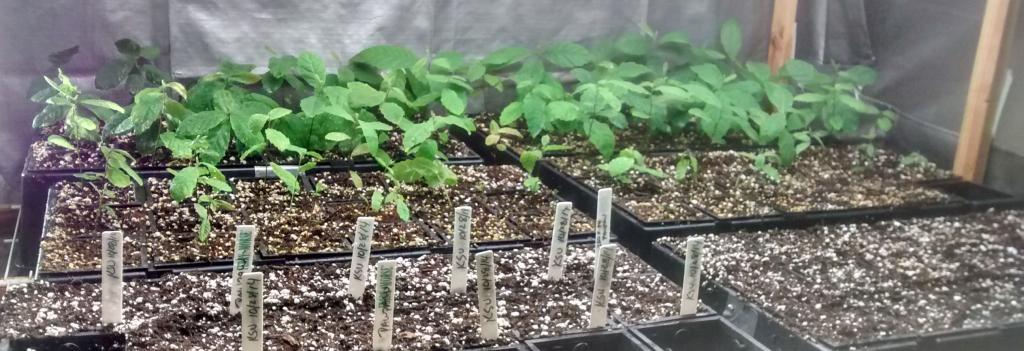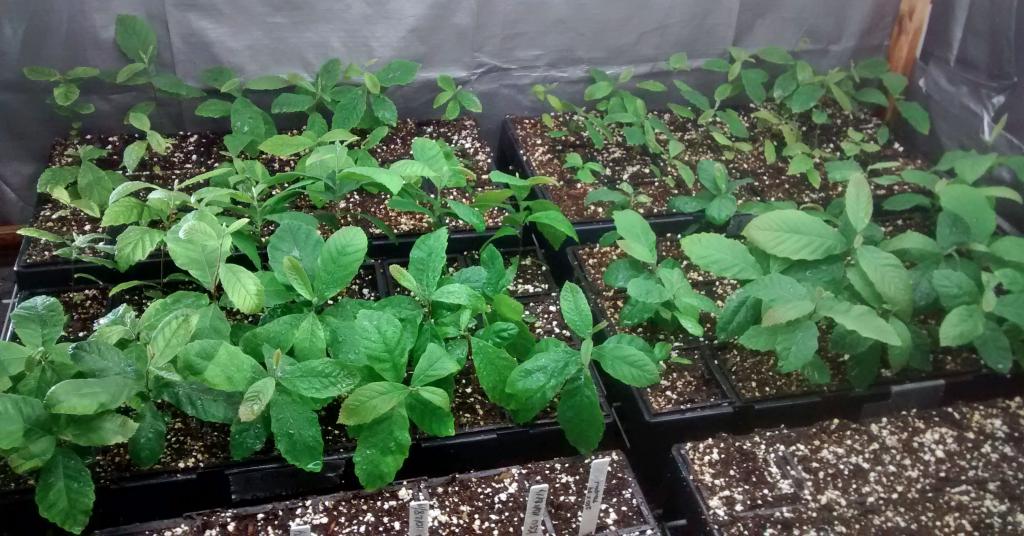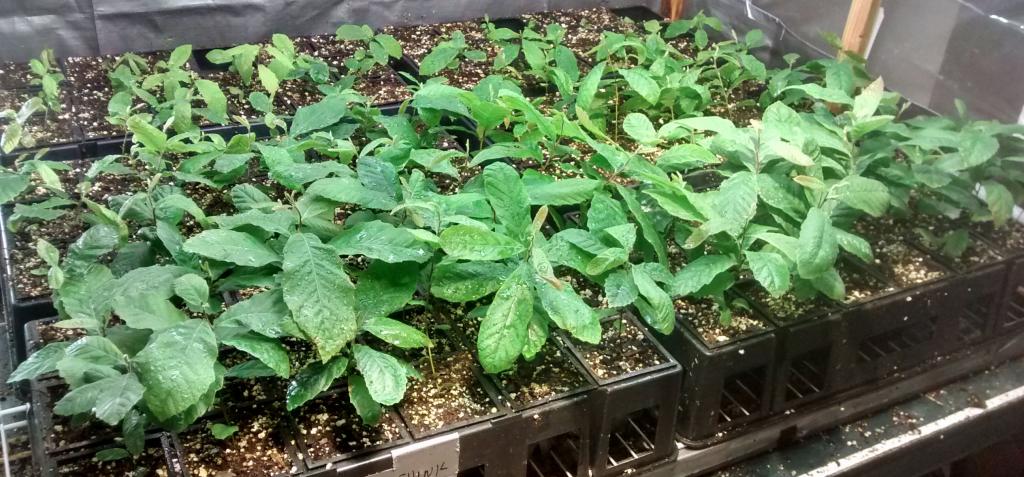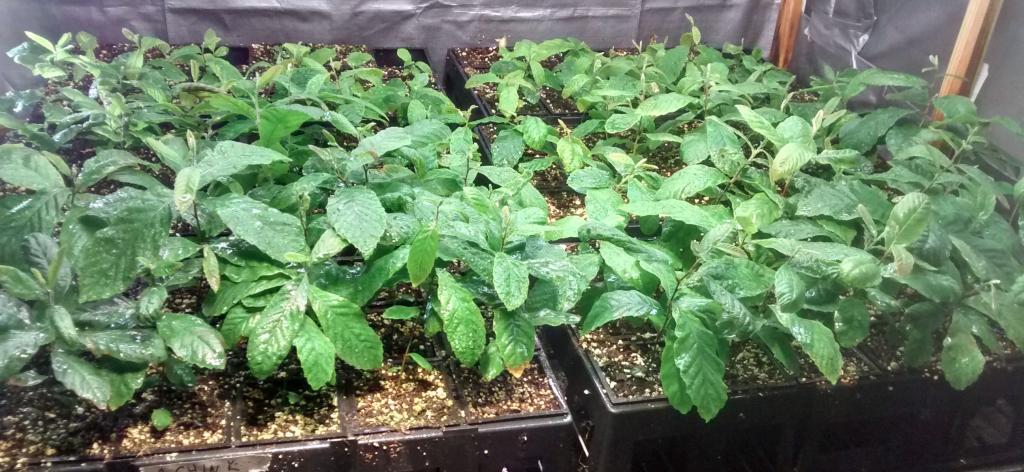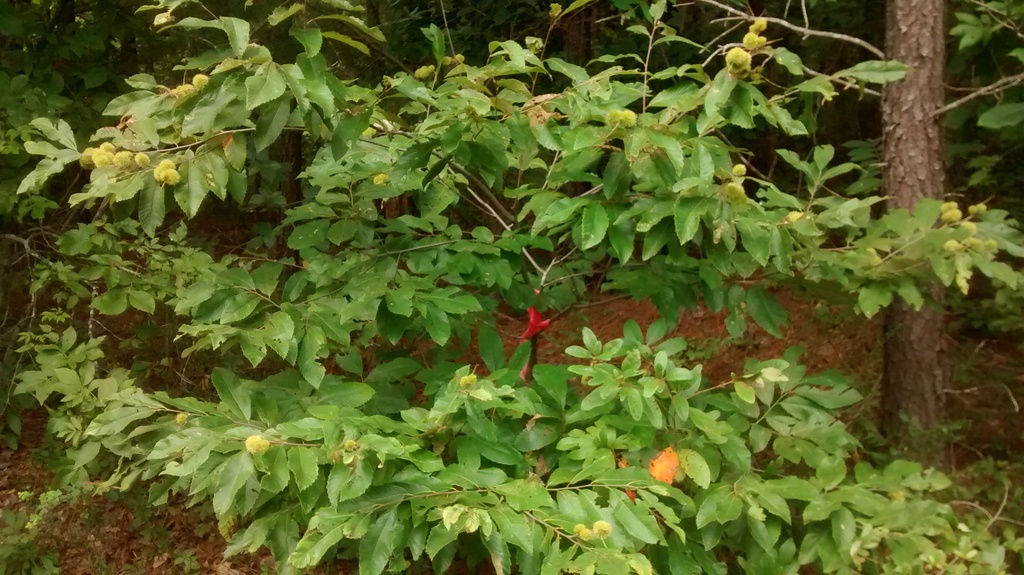yoderjac
5 year old buck +
I found several of these trees heavily laden with nuts. I'm pretty sure it is a chinquapin but I'd like someone who works with them to verify.
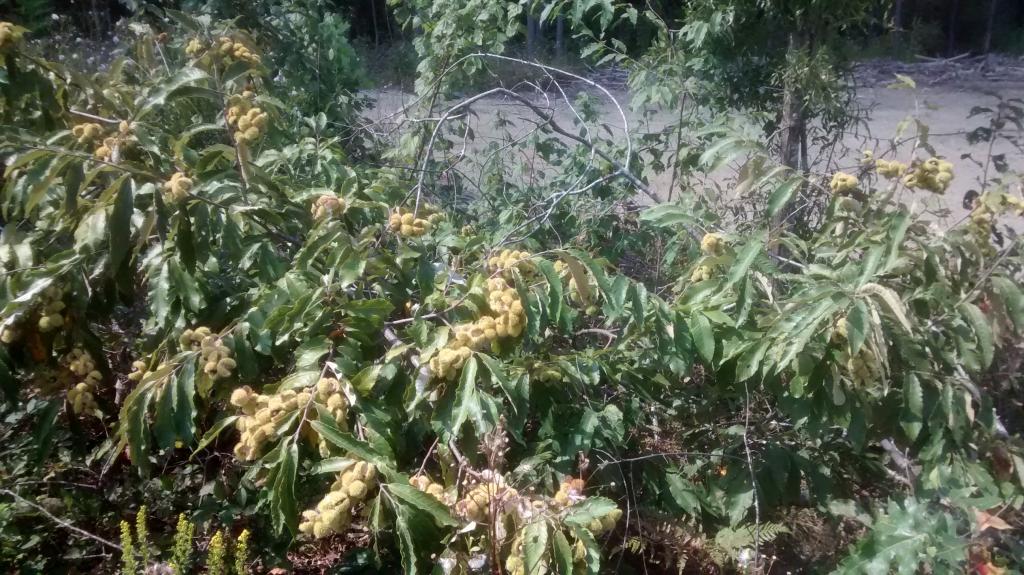
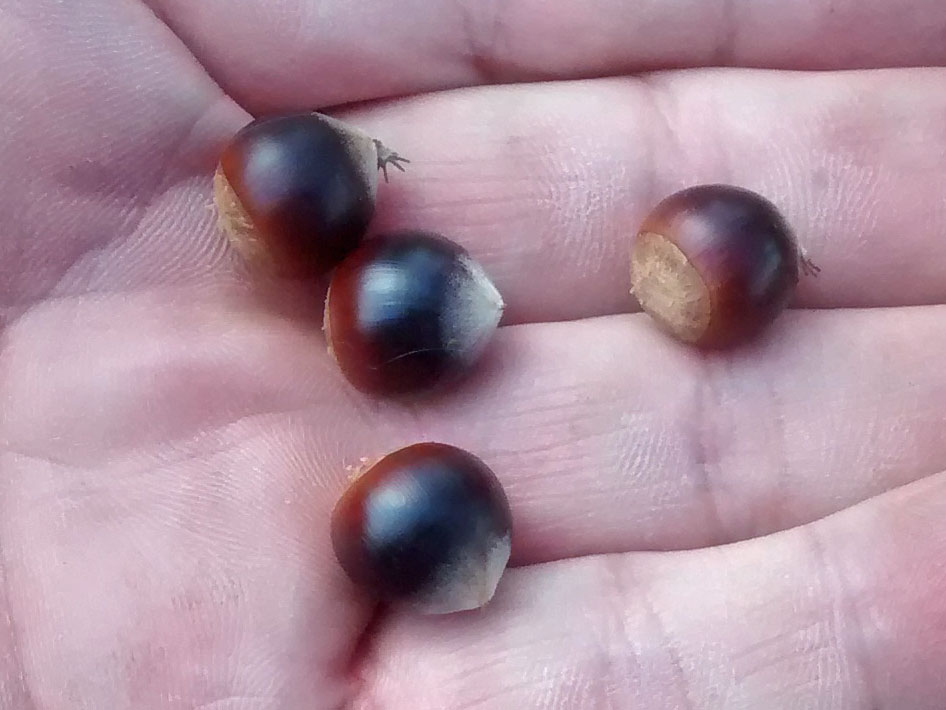
Also, presuming this is chinquapin, for the guys growing them from seed, do the nuts need to be cold stratified? I grabbed a bag full.
Thanks,
Jack
Looks like the ones I've planted, but mine don't have nuts yet (INTERNAL IMAGE LIKE EMOTICON REMOVED)
Looks great Jack ! I'm jealous !!! Good find !!
Im not sure what it is, but Id take a few! Haha.
Good find for sure.
Did you find one nut per husk/hull?
I don't believe that they need to be stratified. Make sure not to get them "too" wet, and that you plant them a tiny bit deeper than most oaks, as that's what they have evolved for!
As bigeight said, great find!!!
Thanks guys! I appreciate the help. Yes, it was 1 nut per husk.
How would you guys rate these as wildlife trees/shrubs for deer and turkey? Since I have a significant free fresh nut source, I'm thinking of collecting a bunch more and adding these in significant numbers to my winter tree project.
Quote:
==================================
Originally Posted by yoderj@cox.net
Thanks guys! I appreciate the help. Yes, it was 1 nut per husk.
How would you guys rate these as wildlife trees/shrubs for deer and turkey? Since I have a significant free fresh nut source, I'm thinking of collecting a bunch more and adding these in significant numbers to my winter tree project.
==================================
I have about a dozen Chinkapin Chestnut Hybrids. most of their nuts are borne 1/husk. I have been told Chinese average 2/husk but I don't know enough to verify. Some of my hybrids will occasionally have 2/husk. I imagine those are the ones that have more of a Chinese influence.
the nuts are small. But, they are a GREAT size for turkey. It has been my experience that animals don't find the source initially. this could be because they are small. However, once they do the earth under the bush will be tore up.
The one in your picture seems more like a bush. Those are exactly how I would describe mine. I have one that is about 8-9 feet. the rest are under 6' tall.
I have had some success with Chinkapins but it has been challenging. I think most of this comes from the climate for which I am trying to cultivate these chinkapins. They are in North central pa, almost to NY border, 1900-2000ft. elevation, SHORT growing season, cold (I have seen 28 degrees on June 8th). Also, they don't "fit" well in tubes because of their bush like habit. Therefore I had to use cages. I made the cages about 24-30" wide and the deer would eat every leaf that stuck out past the cage. w/o a tube instead of growing up, they grow horizontal, which is their habit. So it took them a while to get some height.
I planted them and then could not dedicate the time to monitor for a couple years due to family and kids commitments. I also had winter dieback the first couple years. (end of excuses)
But they are now making it. FWIW, my best chinkapins are growing on various slopes under canopy of larger trees. The ones on the flats just not the strongest. Also odd that three on slopes facing North East are doing the best. go figure. (INTERNAL IMAGE LIKE EMOTICON REMOVED)
I bought mine as seedlings and a few 2 year pots. Don't know about starting from seeds but my guess would be that yes the do need stratification.
LMK if I missed anything.
Jack - you will find (or at least I did) that chinkapin germinate very well. I have a few dozen growing in buckets currently from those I picked last fall. They are a white oak so no cold hours or stratification is needed - float test them and put them in some ground. Mine germinated well by just pressing them into the soil. Chinkapin produce early season acorns (first to fall in my area) - I have actual trees not the shrubs. They don't get as large as say a regular white or red oak. I found that young trees in excellent conditions will produce nuts in roughly 5 to 10 years. The acorns are small so lots of critters like them. Not the best oak for timber simply because they don't get huge - but they are a nice early producer of acorns so if you have an early hutnign season they can be a great draw for the critters. I will say that mine like a course/rocky soil that drains well. All of mine are on a steep slope that transitions from an upland type condition to a bottom/flood plain type condition. Mine do well in the same areas as my norther reds and Burr oaks. Good luck if you plant some - I got over 50% germination my first try ever growing acorns and I was too cheap to use comercial tools to do so. I used a potting mix a plastic tray and some mesh wire - I then simply transplanted those that germinated into a deeper container and set them in the soil over the winter - I'm sure there are better and faster ways - but if I can do it a 3rd grader can do it!
They are the bees knees for wildlife food. I think they taste a lot like corn pops.
That looks like a bush we used to have on our PA property. It was identified as an Alleghany Chinquapin. Everything eats the nuts. We lost ours about 5 years ago during a really bad winter snow. The deer ate them to the ground and they have never recovered. We are planning to replant some seedling this spring.
Quote:
==================================
Originally Posted by j-bird
Jack - you will find (or at least I did) that chinkapin germinate very well. I have a few dozen growing in buckets currently from those I picked last fall. They are a white oak so no cold hours or stratification is needed - float test them and put them in some ground. Mine germinated well by just pressing them into the soil. Chinkapin produce early season acorns (first to fall in my area) - I have actual trees not the shrubs. They don't get as large as say a regular white or red oak. I found that young trees in excellent conditions will produce nuts in roughly 5 to 10 years. The acorns are small so lots of critters like them. Not the best oak for timber simply because they don't get huge - but they are a nice early producer of acorns so if you have an early hutnign season they can be a great draw for the critters. I will say that mine like a course/rocky soil that drains well. All of mine are on a steep slope that transitions from an upland type condition to a bottom/flood plain type condition. Mine do well in the same areas as my norther reds and Burr oaks. Good luck if you plant some - I got over 50% germination my first try ever growing acorns and I was too cheap to use comercial tools to do so. I used a potting mix a plastic tray and some mesh wire - I then simply transplanted those that germinated into a deeper container and set them in the soil over the winter - I'm sure there are better and faster ways - but if I can do it a 3rd grader can do it!
==================================
J-bird, those nuts and the bush look like Chinkapin chestnuts to me. Not Chinkapin oaks. Are you talking about your Chinkapin oaks or Dwarf Chinkapin oaks? Thanks for great info.
Last edited:

